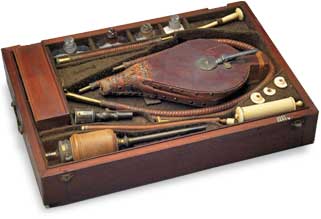 |
|
||||||||||||
|
|
 |
|
 |
|
 |
 |
|||||||
|
|
 |
|
 |
|
 |
|
|||||||
|
|
|
|
|
|
|
|
|
|
|
|
|
|
|

This entertaining and informative book by Andras Gedeon is about those who contributed science and technology to medicine and it fills an important gap in the history of medicine. Each of the 99 chapters starts with a brief biographical sketch, followed by a description of the scientific or technological discovery. Then the significance is explained clearly, followed by an historical perspective, placing the discovery neatly in the evolution of medicine.

The book will be of value, not only to historians, but also those who wish to illuminate their lectures and speeches with relevant and interesting facts, some of which may be surprising. For example, most associate the name of Doppler with the frequency shift of sound or radar waves. However, Doppler’s original paper described the color change associated with a rotating pair of stars in the heavens. Its audible proof for everyone was the frequency change heard when a trumpeter was emitting sound when on a passing train.
Within the various chapters, one finds a smorgasbord of fascinating information on the background of many “modern” medical techniques. For example, mouth-to-mouth resuscitation was in use in the mid 1700s. Electric stimulation was used slightly later to resuscitate subjects with respiratory arrest. Long before the first implanted cardiac pacemaker appeared in 1960, stimulation for cardiac arrest was performed in the late 1800s. These and many other historic tidbits are found in the many very readable chapters.

Each chapter concludes with a perspective that places the discovery nicely in the history of medicine. It tells about the knowledge prior to the discovery, thereby enabling the reader to identify creatively and ingenuity of the discoverer. The perspective does not confine itself to prior medical history; it covers contemporary and prior relevant discoveries in related scientific areas.
The reader will find the book difficult to stop reading. In fact this reviewer found it addicting and it will be found on my bookshelf that contains my most valuable reference books.
